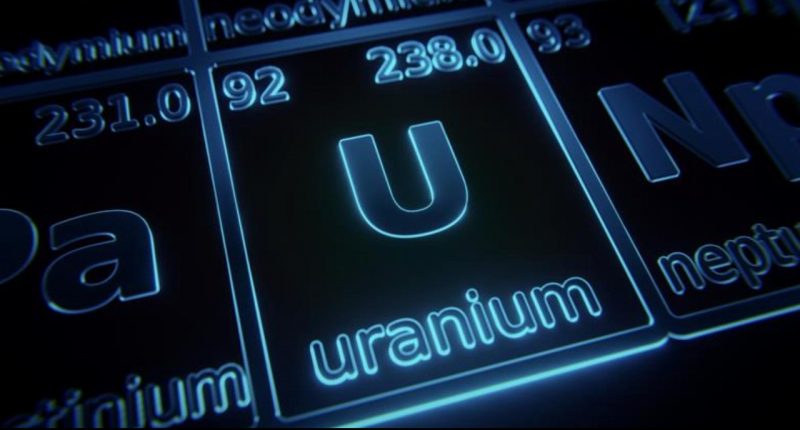The price of uranium hit a new high of US$81.45/lb overnight, driven by America passing a Russian uranium import ban.
Well, sort of. There’s one big caveat – the US can continue importing Russian uranium until 2028.
Under the bill, brought by Congresswoman Cathy Rodgers, the US Department of Energy (DOE) can subvert the law into 2028.
The wording of the bill allows for the DOE to subvert the new laws if in the national interest.
Section 2 of the bill reads “The Secretary of Energy, in consultation with the Secretary of State and the Secretary of Commerce, may waive application of [the import ban] … if the Secretary of Energy determines … no alternative source is available … or importation of [uranium from Russia] is in the national interest”.
Divining government-speak
In 2022, Russia was the largest foreign supplier of uranium to the US.
“Today, [Russia] accounts for more than 20 per cent of nuclear fuels for American reactors. Last year alone, our industry paid over $800 million to Russia’s state-owned nuclear energy corporation,” Ms Rodgers wrote in a joint statement with Energy Security Subcommittee Chair Jeff Duncan.
“We are seeing important fuel processes returning online in the United States.
“For example, the uranium conversion facility in Metropolis Illinois has restarted operations for the first time in years. That facility alone could meet the domestic uranium conversion needs within two years.”
Ms Rodgers and Mr Duncan also alleged Russia is flooding the US with cheap uranium to undercut domestic development.
Unpacking foreign supply share
According to the US Energy Information Administration (EIA), Russia provides 24 per cent of uranium for US nuclear reactors.
The US covers 27 per cent of its supply, but beyond that, it’s foreign supply – with Russia in first position.
Other major suppliers in 2022 were: “Other” with 17 per cent; Germant with 12 per cent; the UK with 11 per cent and the Netherlands with nine per cent.
These imports relate to enriched uranium fuel ready for use in reactors.
BloombergNEF nuclear analyst Chris Gadomski said only Russia has the type of uranium fuel, called Haleu, modern US reactors need.
In that light, the 5-year-waiver period makes sense.
One is left to deduce the 5Y window is strategically placed to allow US or allied projects to come online.
ASX implications
So what are the prospects for increased US offtake of Australian uranium?
While it’s still early days – this new law was only passed overnight – uranium watchers are likely to be closely monitoring developments.
The price of the nuclear fuel is up 68.46 per cent over the last year at 1:20 pm AEDT today, according to TradingEconomics.

The implication is that Australian uranium miners stand poised to benefit from rejuvenated relationships with US buyers.
The fact we do not have the capacity to enrich uranium to US reactor requirements is one obvious hurdle.
The other is the Australian government’s ongoing reluctance to support nuclear.
COP28, the 2023 iteration of the UN’s leading climate change conference, saw all of Australia’s allies agree to step up nuclear capacity.
Australia, however, neglected to sign the pact.
US Government pressure on Canberra to supply uranium might be needed to get some balls rolling – and that doesn’t answer the enrichment question.
But it isn’t like Australia doesn’t already have the framework in place to allow exports to flow.
USA “certainly” looking at Australia: Cauldron Energy CEO
At least one ASX-listed uranium company executive is bullish on the dynamic.
The CEO for Cauldron Energy (ASX:CXU) – up 10.5 per cent to 2.1 cents at 1:20 pm AEDT this afternoon – Jonathan Fisher told The Market Herald he sees low barriers to entry for Australian companies providing US supply.
“Certainly the US will be looking to its like-minded partners like Australia for uranium supplies in the longer term,” he said.
When asked by The Market Herald what hurdles an ASX uranium miner must jump to export a shipment, Mr Fisher pointed only to Federal export permits.
“To export uranium you need to obtain an export permit from [Canberra],” he said.
“In all honesty, a US-based entity should not be a problem [in light of receiving an export permit] as long as the end-user was still within the US.”
Under Australia’s existing Uranium Export Policy (UEP), uranium can be exported for energy generation – just not weapons manufacture.
The Department of Foreign Affairs and Trade has reported findings that in 2021, Australian uranium export permits typically took just over two days to get approved.
With a raft of bilateral nuclear agreements already in place, the framework already exists that the US needs to engage with Australia to offtake uranium for its own needs.
The question remains: who will enrich it?
ASX uranium stocks were mixed on Tuesday, not particularly responding to the US move overnight one way or the other.
Watch this space.








